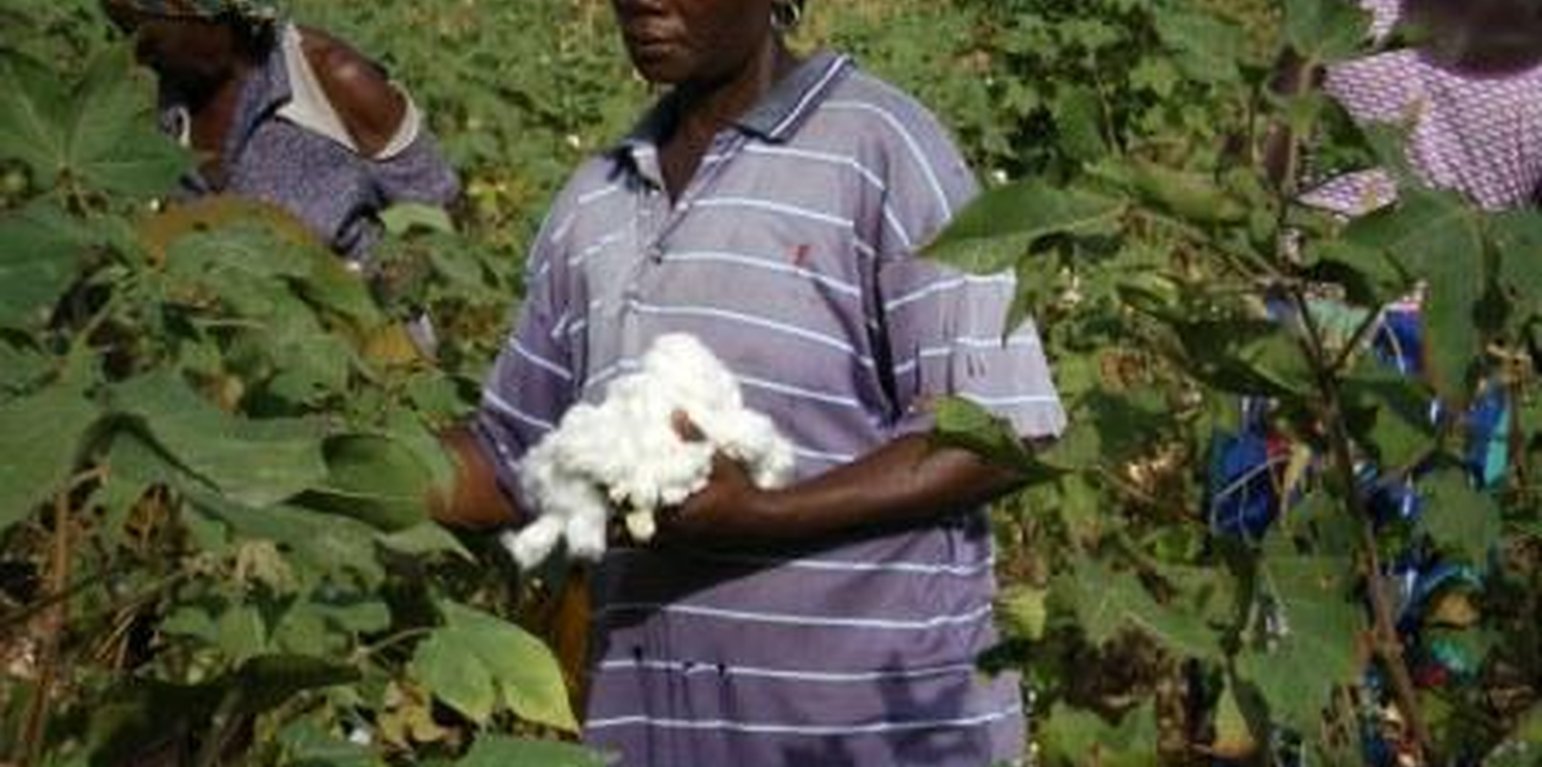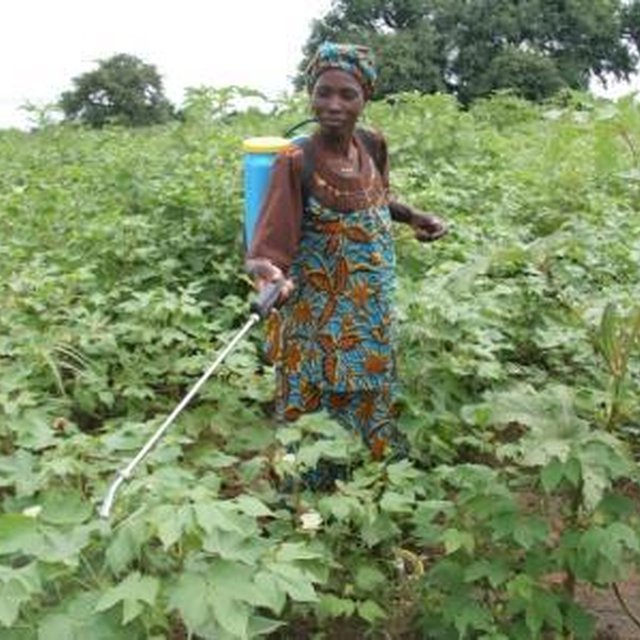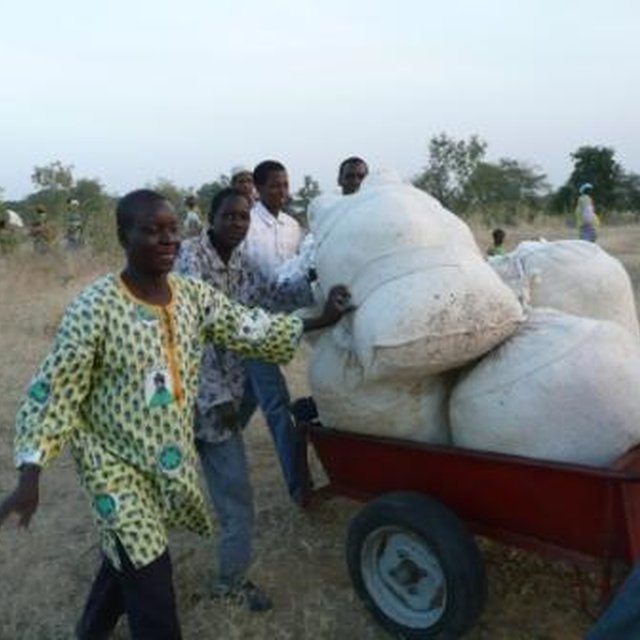



Organic cotton production adheres to the principles and standards of organic farming. Any application of synthetic fertilizers and pesticides and the use of genetically modified varieties are forbidden. Organic cotton relies on a combination of different measures: (1) the use of organic fertilizers (manure or compost) and recycling of organic matter; (2) Crop rotation and/or intercropping; (3) Careful selection of varieties adapted to local conditions (climate, soil, pests and diseases); (4) Biological pest management (in combination with careful monitoring of crops); (5) Clear separation of organic and conventional cropland, e.g. by growing border crops (to avoid contact with chemical substances through spray drift or surface runoff); and (6) Soil and water conservation measures. Timely crop management (e.g. weeding) is very important. In Loba rotations crops include sesame (a cash crop), cereals and legumes (food crops), while intercrops include leguminous green manure and trap plants. The best adapted cotton variety is FK-37. Bio-pesticides are produced based on neem seeds (Azadirachta indica). The measures listed above help to improve soil fertility, reduce production costs (and thus financial risk) and avoid the negative effects of conventional farming: declining yields, resistance to pests and diseases, health hazards and environmental problems caused through the use of chemicals. By relying on inputs available/produced on the farm and by getting a better price for certified organic products, profitability of the farm is improved in the long run despite of lower productivity compared to conventional or genetically modified (GM) cotton. Farms need to complete a 3-year conversion period to change their production system from conventional to organic. Farmers have to maintain records and documents for periodic inspection and certification (Internal control system).
Lugar: Dano, Ioba province, Burkina Faso
No. de sitios de Tecnología analizados:
Difusión de la Tecnología:
¿En un área de protección permanente?:
Fecha de la implementación: hace menos de 10 años (recientemente)
Tipo de introducción





| Especifique insumo | Unidad | Cantidad | Costos por unidad (n.d.) | Costos totales por insumo (n.d.) | % de los costos cubiertos por los usuarios de las tierras |
| Mano de obra | |||||
| Labour | ha | 1,0 | 2,0 | 2,0 | 100,0 |
| Equipo | |||||
| 15-liter-knapsack | ha | 1,0 | 50,0 | 50,0 | 100,0 |
| Costos totales para establecer la Tecnología | 52.0 | ||||
| Costos totales para establecer la Tecnología en USD | 52.0 | ||||
| Especifique insumo | Unidad | Cantidad | Costos por unidad (n.d.) | Costos totales por insumo (n.d.) | % de los costos cubiertos por los usuarios de las tierras |
| Mano de obra | |||||
| Labour | ha | 1,0 | 160,0 | 160,0 | 100,0 |
| Otros | |||||
| Cotton & intercrop seeds, ma | ha | 1,0 | 28,0 | 28,0 | 100,0 |
| Indique los costos totales para mantenecer la Tecnología | 188.0 | ||||
| Costos totales para mantener la Tecnología en USD | 188.0 | ||||
Reduced financial risk, less indebtedness for input provision
better price due to organic premium (50% more than for conventional cotton) compensates initial decrease of yields
less expenses for inputs (- 90% compared to conventional cotton), gross margin is 30% higher,
enhanced health of humans and livestock: no health risks due to pesticides, diversified and organic food crops
enhanced organisation (farmers groups)
due to organic manure and crop rotation
Eco-balance between pests and beneficial insects
No pollution